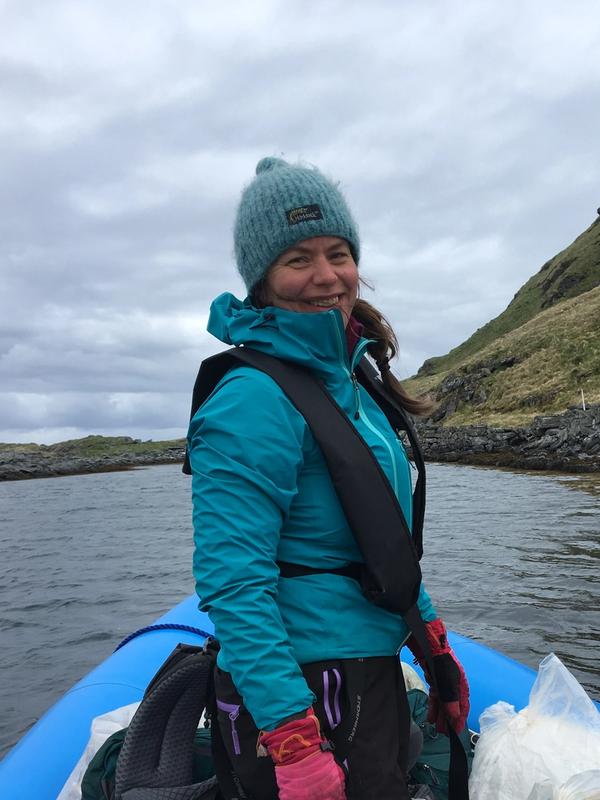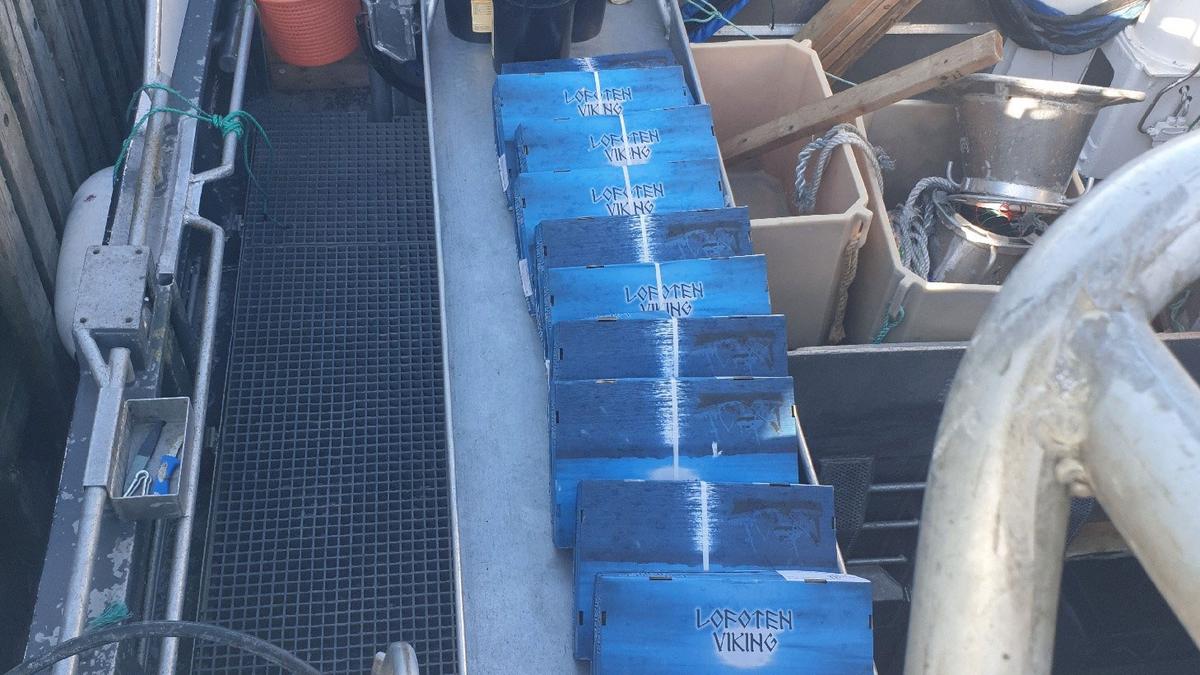Fisheries and aquaculture contribute with seafood to a world that needs healthy food. On the other hand, the tools they use, such as nets, fish pots, ropes and net cages, are a considerable part of marine litter. We are fishing for the good solutions.
During the 2019 Beach Clean-up Week, ropes topped the national list of litter that was collected from Norwegian beaches. After years of mapping and research, the figures clearly show that litter from the major users of the sea is one of the primary sources of global marine littering. The majority of beach litter in Northern Norway and on Svalbard is of maritime origin. Most of the nets and rope ends are discarded pieces and more than half are less than five years old.
Through her work for the specialised company SALT, Marthe Larsen Haarr has been involved in several projects which have examined the scope of and solutions for marine litter from sea-based sources, such as MARP, Dypdykk and Fishing for Litter.
Much of it comes down to establishing routines and technological development.

Right now, the largest project of Marthe’s professional life is Marine Debris Action Planner (MAP), which has the goal of using data and GIS variables to locate the ocean’s own disposal areas along our coastline.
Grid Arendal is taking part in this work. SALT’s marine littering projects have shown that litter from all users of the sea is one of the major sources of beach litter, particularly in Northern Norway and on Svalbard.
- There are a lot of discharges to deal with, but in my experience, the marine industries are concerned with and care about marine littering. Much of it comes down to establishing routines and technological development, says Marthe Larsen Haarr, SALT.
On board Eros
– We say that we have the cleanest sea in the world, and that’s an asset we must take care of. The fisheries aren’t perfect, but the better we get at cleaning and showing that we care, the better the outcome. We are certainly not the worst, and we need to work on spreading our work methods to the rest of the world. And we must also be prepared to clean up after others, says Stig Atle Sivertsen, skipper on the coastal fishing vessel Eros.
On board Eros where Stig Atle is the skipper they take a firm line when it comes to litter – everything must go back to land. This applies both to the litter they produce themselves, and what they collect from the sea. One example is fishing for Greenland halibut where, among other things, they bring along 30 cases of bait. Stig Atle’s policy is that if you can carry it on board, you can get it back on land. They keep sacks on the deck for discarding rope ends and miscellaneous pieces. During the splicing process on the deck, he doesn’t see the advantage of throwing the litter overboard instead of in a conveniently placed sack. They also pick up any litter they find floating in the water, and during a winter season they often bring several sacks to land every day containing second-hand.

– Ever since I became a full-time skipper in 2011, I have been very conscious of litter, and on this ship, litter goes to land. There has been a considerable shift in attitudes over the past 15 years as regards litter among fishermen. When I first started out, a lot went overboard, but we cannot keep filling the seas with crap.
The fight against ghost nets
You can be the best fisherman around, and still get unlucky and lose all or parts of your gear. The risk of losing tools is a normal part of the day for a fisherman. -Gjermund Langedal, Directorate of Fisheries.
In the Directorate of Fisheries, Gjermund Langedal has worked for numerous years to find good solutions to reduce loss of fishing gear. After 40 years of experience, the Directorate of Fisheries has established good systems for reporting lost gear, and they have been going on clean-up missions to haul up lost gear for just as many years. They have achieved good results in their work to prevent ghost nets. The major cause of loss used to be gear collision. There would be a crash in fishing fields, and trawls took nets, and seines took lines, etc. Today, this is only a marginal problem after the launch of FiskInfo, which is now used by most fishermen. Now, current conditions and ship traffic are generally the cause of gear loss. Moreover, loss is reported now, while there were considerable dark figures before.
– The concept is incredibly easy, it’s about acknowledging each other and sharing information. In the old days, fishing spots were carefully guarded secrets. The maps fishermen use today are also very good. There were considerable dark figures in the past for lost gear, but fishermen today trust that the authorities will take action and report. This creates a positive spiral. The annual number of loss reports is between two and three hundred. Loss of gear entails a major cost for fishermen. For 2018, we returned an impressive 70 per cent of nets and pots to owners. Our goal is to accomplish the same in the years to come, says Gjermund Langedal.
On board Eros, it has been five years since they last lost gear. For Stig Atle, the loss of a chain of nets would equal NOK 90,000 sinking to the seabed, in addition to lost time and a wasted fishing trip.
– We have not lost any nets in the last few years. Among other things, we have two ends for everything, so if one tears off, we pick it up at the other end. We are also talking about having the financial leeway to invest in better gear. Before, we had different dimensions for ropes and such, and investing in better gear has proved profitable over the long term.
In the Directorate of Fisheries, nets and pots are the most vulnerable tools when it comes to gear loss, and they also have the greatest consequences under water, as they do not collapse. Recreational fishing is big in Norway, and the hobby fisherman also plays a considerable role in the challenge of lost fishing gear. The Directorate of Fisheries now has good systems in place for reporting and collecting lost gear for the slightly clueless hobby fishermen, as well as the professionals.
At the end of the rope
Much of what ends up as beach litter, and what many beach cleaners call nets, are often discarded pieces and remnants from seines and trawls. However, it is not so simple as assuming that the largest vessels are the ones who dump the most, they actually have the gear that floats the best, and which therefore ends up washing ashore. Research and mapping show that much of what ends up on the beach is discarded pieces, such as rope ends and parts of nets and trawls. In connection with the MAP project in SALT, mapping revealed that, based on quantity, 32 per cent of all marine litter in Lofoten and Vesterålen came from sea-based sources. Measured by weight, this increased to 75 per cent.
– The biggest percentage of beach litter is rope ends. We are also seeing that litter such as package straps and plastic that belong below deck, ends up in the sea. As regards rope cuttings, the most probable source is everyone working at sea, which therefore means that this is a joint problem across industries, says Marthe Larsen Haarr.
As for Stig Atle on board Eros, his experience has shown that it is often the older generation of fishermen, who work based on old routines and habits, who have a mind-set of ‘what goes overboard is gone and that’s how it’s always been’. He is supported by Gjermund Langedal in the Directorate of Fisheries, who believes that the incoming younger generation of fishermen are very environmentally conscious. However, Stig Atle has found one trick that works well in his family of fishermen.
– My father gets an earful from the grandchildren if he puts litter in the wrong place. The massive involvement and passion when it comes to plastic in the sea is fantastic, and that is doing something to us. I don’t want everyone who cleans litter along the coast to end up with loads of work because I don’t have a sack for rope ends and discards on deck. It’s no more difficult to toss something into a sack on the deck than over the railing and into the water. That’s just too silly.

Mission accomplished?
The specialised company SALT delivered in 2019 one of the sub-reports in the Havplast project, which has the goal of reducing discarded plastic from fisheries and aquaculture in the marine environment. The project is about volumes, sources and causes, but most importantly, it’s about promoting concrete measures to reduce litter from sea-based sources. A total of 17 measures have been proposed. Three of them are:
- including integrating plastic littering in safety training for fishermen and seamen
- allowing fishermen and aquaculture industries to participate in beach clean-ups
- improving litter systems both on board and at harbours.
– Part of the responsibility is about the system as a whole, not just fishermen and aquaculture facilities. It’s wrong to single them out, because better facilitation and infrastructure are needed to handle the litter when it comes to land, says Marthe Larsen Haarr from SALT.

Stig Atle Sivertsen knows what it is like to arrive at night in terrible weather to a harbour with an incredibly bad litter system.
– There are too many harbours that are terrible at litter, even though there are good examples of the opposite, such as Svolvær. There needs to be good solutions at every harbour and a coordinated system. It’s a bit hopeless if you arrive to deliver litter and the container is locked and no one can reach the harbour officer. I would like an app with an overview and lock codes for users, says Stig Atle Sivertsen.


